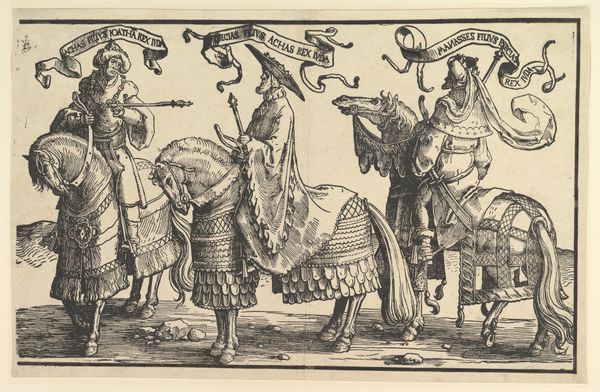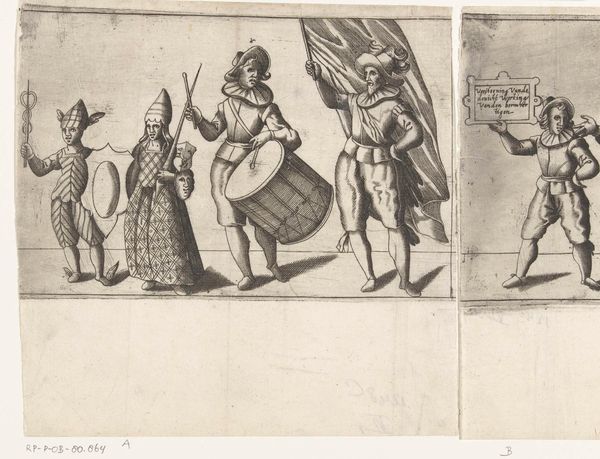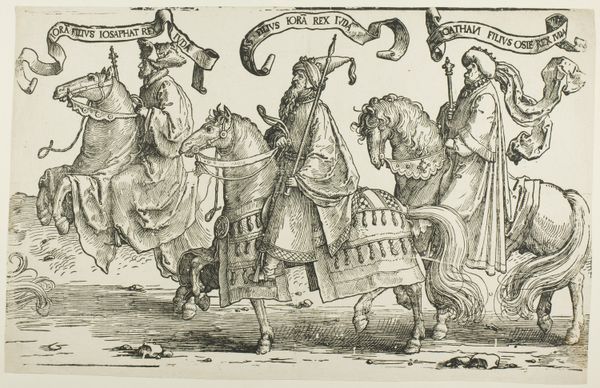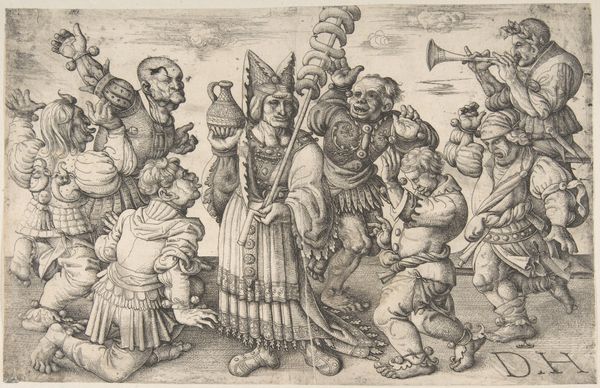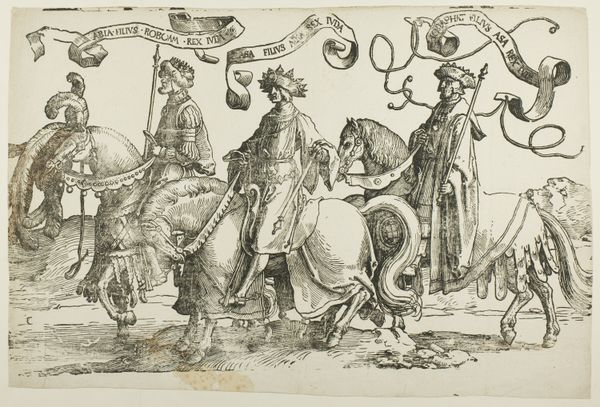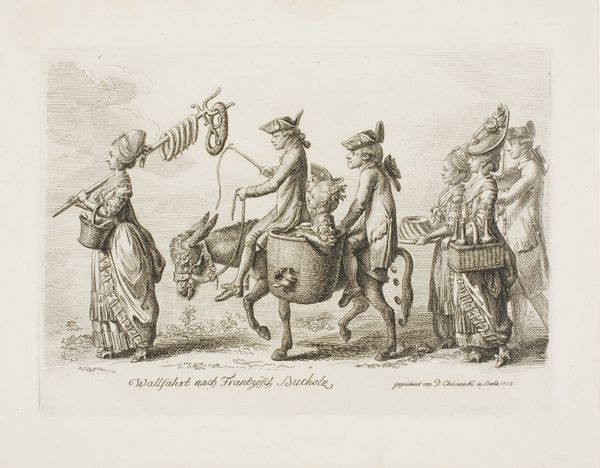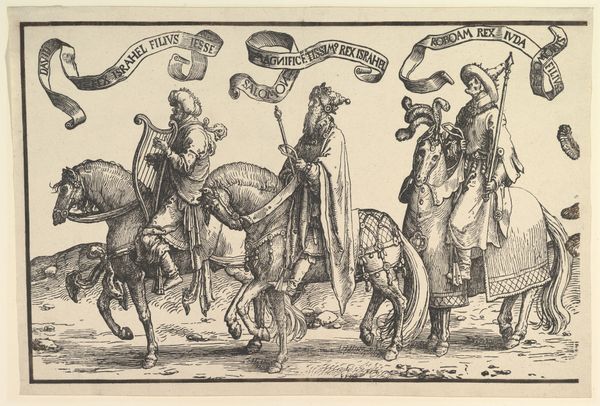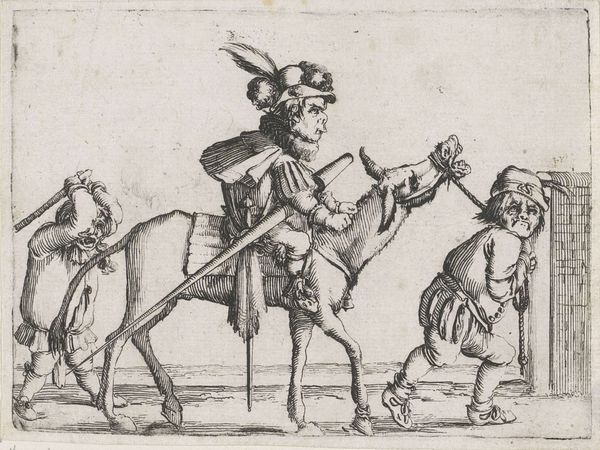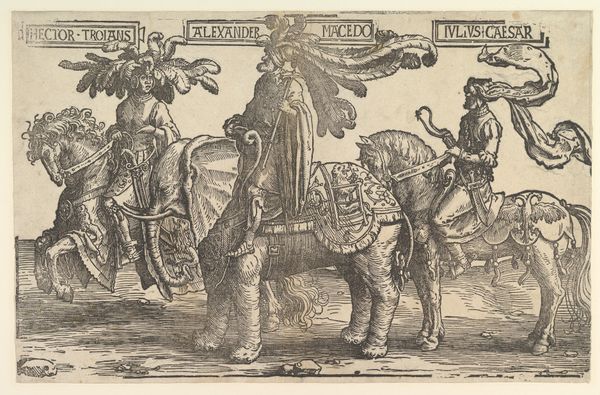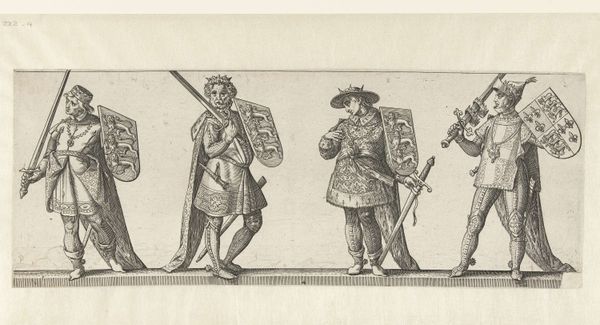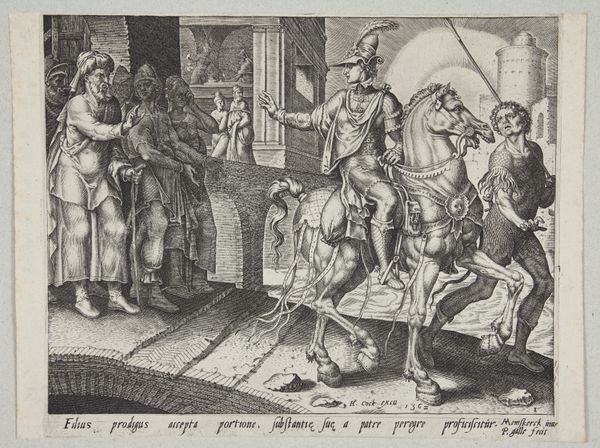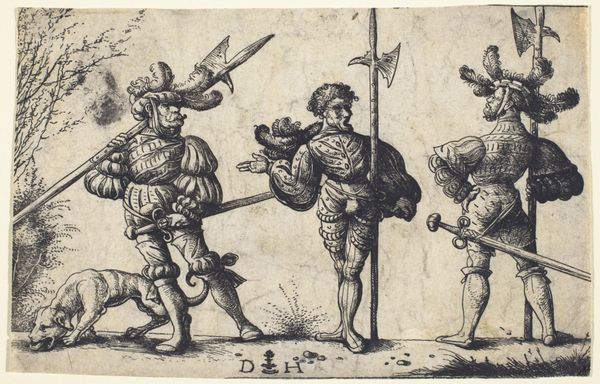
Ahaz, Hezekiah, Manasses, plate four, from The Twelve Kings of Israel c. 1520
0:00
0:00
drawing, print, paper, ink, engraving
#
portrait
#
drawing
# print
#
figuration
#
paper
#
ink
#
history-painting
#
northern-renaissance
#
engraving
Dimensions: 314 × 502 mm (image); 345 × 502 mm (sheet, trimmed within block)
Copyright: Public Domain
This is Lucas van Leyden’s engraving of Ahaz, Hezekiah, and Manasses made in the Netherlands sometime before the artist's death in 1533. Part of a series called *The Twelve Kings of Israel,* the image depicts three old testament kings on horseback. The format is interesting because it shows how biblical history was often translated into contemporary terms. Lucas van Leyden was a leading printmaker of the Northern Renaissance, during the rise of humanism. The visual codes here—the dress and armor of the figures and their horses—belong to the world of early 16th-century Europe rather than ancient Israel. Though Biblical in subject, this print speaks to contemporary European concerns and sensibilities. Note that the riders are identified by Latin inscriptions in the sky above them. To get a better understanding of the cultural context of this print we could examine costume books of the period, religious attitudes, and changing status of the artist. We might then better appreciate how art of the past speaks to a specific moment in time.
Comments
No comments
Be the first to comment and join the conversation on the ultimate creative platform.
